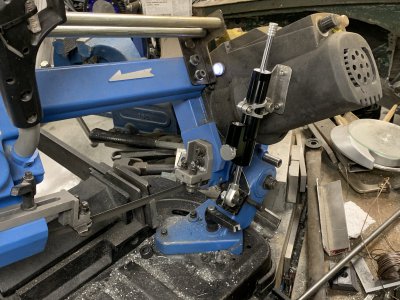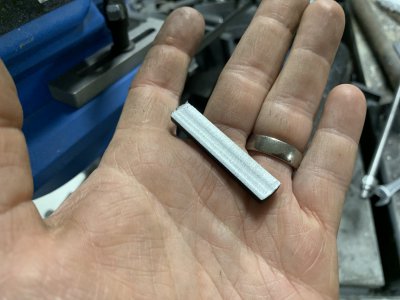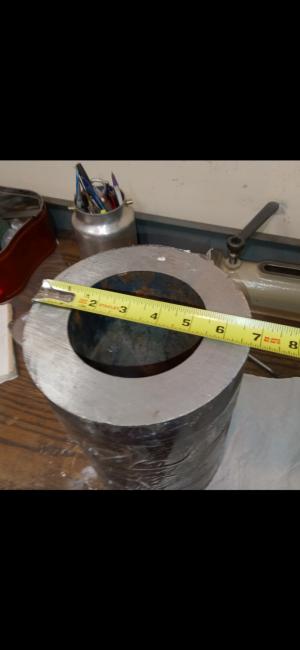That's a lot of weight on the blade. As someone else mentioned I would bring the guide in to reduce the span.
I think looks are a bit deceiving.
The sliding mechanism is hollow tubes and aluminium.
With the two blocks of steel in it, coupled with the spring-loaded hinge it's only applying up to 1.8kg of force into the cut
Surely that can't be considered too much?
Testrig:
Bar suspended across two points, not clamped in vice.
Blade lands in the middle, equal distances out to the outwards points.
Any load exerted from the blade should be split roughly 50/50 between the side with the scale and the pivoting side.
With the weight slighly behind the handle the scale registers ~300g, so 600g "downforce" on the blade.
With the weight extended all the wayout the scale registers ~900g, so 1800g downforce on the blade.
I guess it's possible that 1.8kg / ~18N is too much but to me it sounds like a rather small number.
Looking at the chips it's basically producing dust, not shavings, at anything less than 600g downforce.
At 1800g it's cutting beautifully until it starts acting all "harmonicy" and eventually throws the blade.
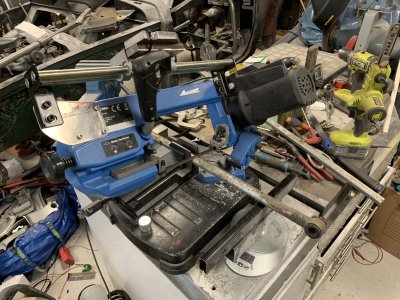
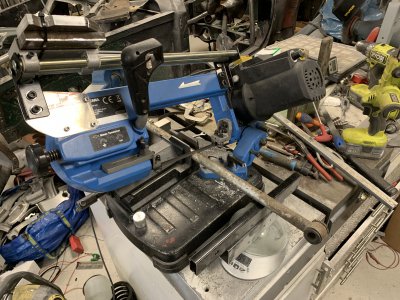
I have moved the support out more but when I'm cutting larger things I will be back to the same 'bad stability' I assume.
Some ideas I had were to also add a oil-piston to the setup to dampen the harmonics and keep the cutting pace more uniform.
Another was to reinforce the structure with some more material but then it's gonna look real frankenstein-y.





